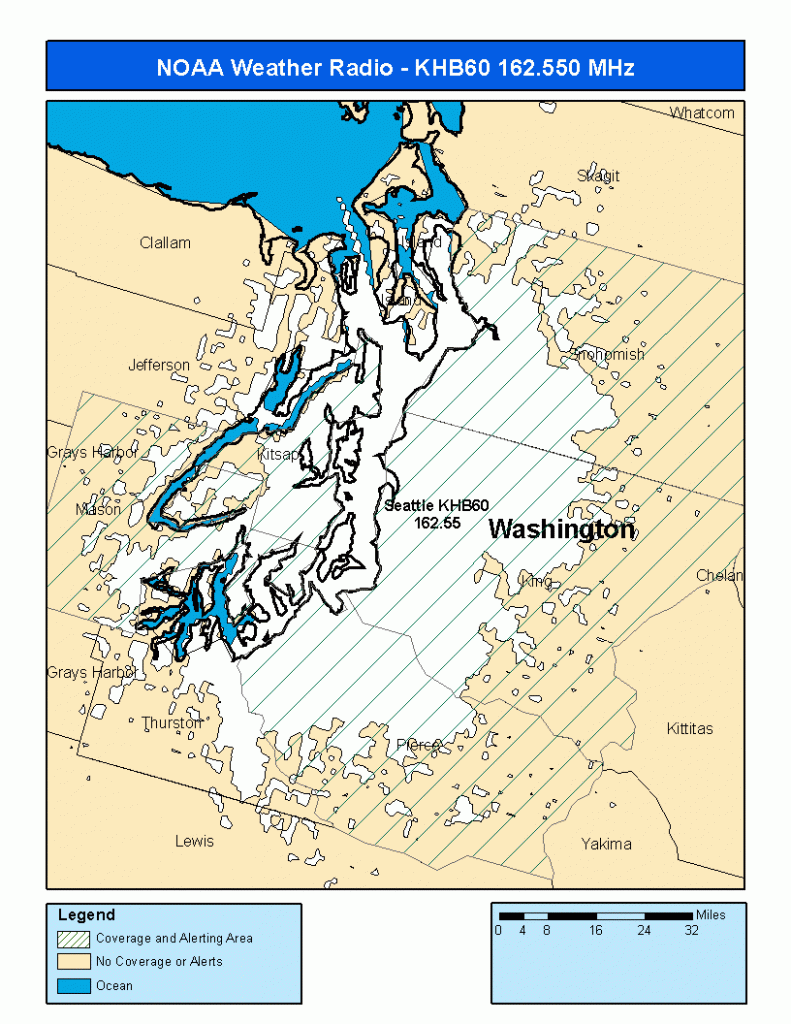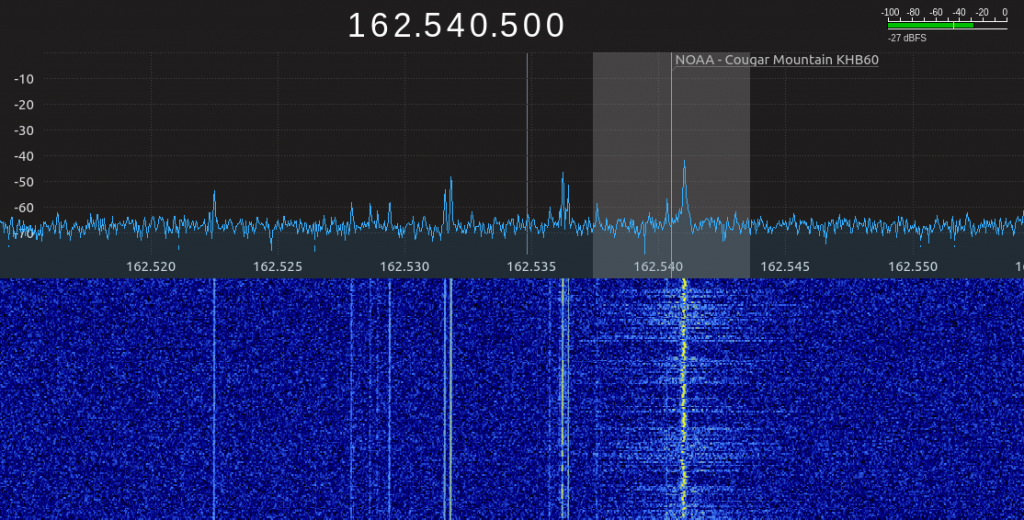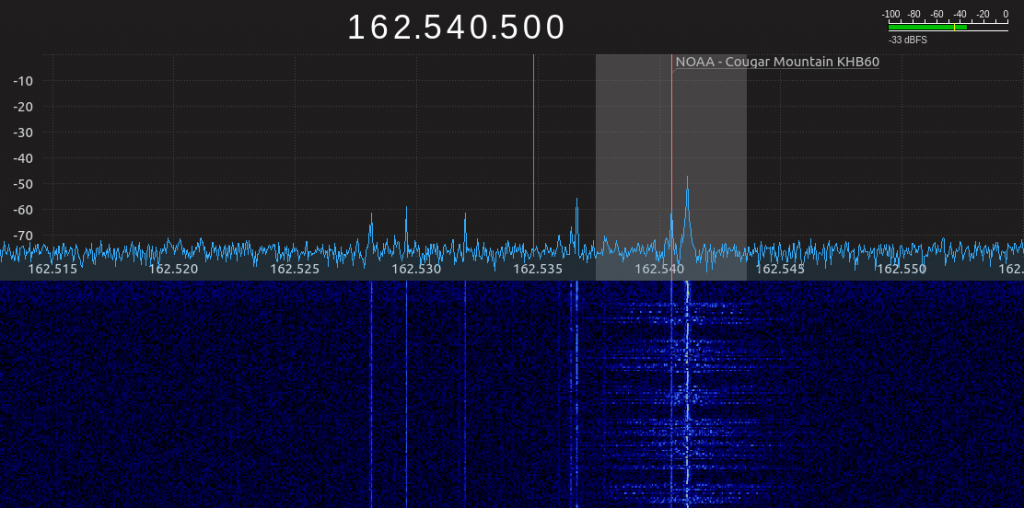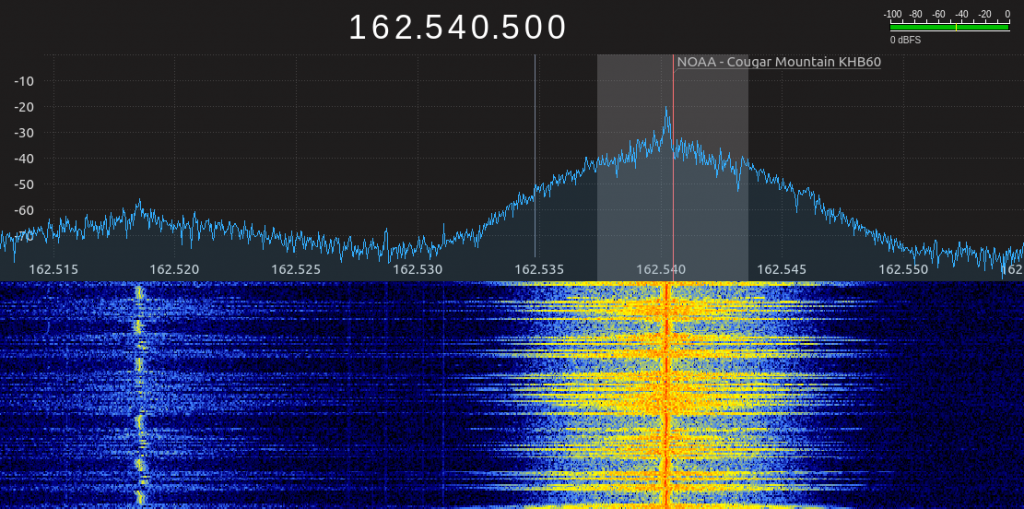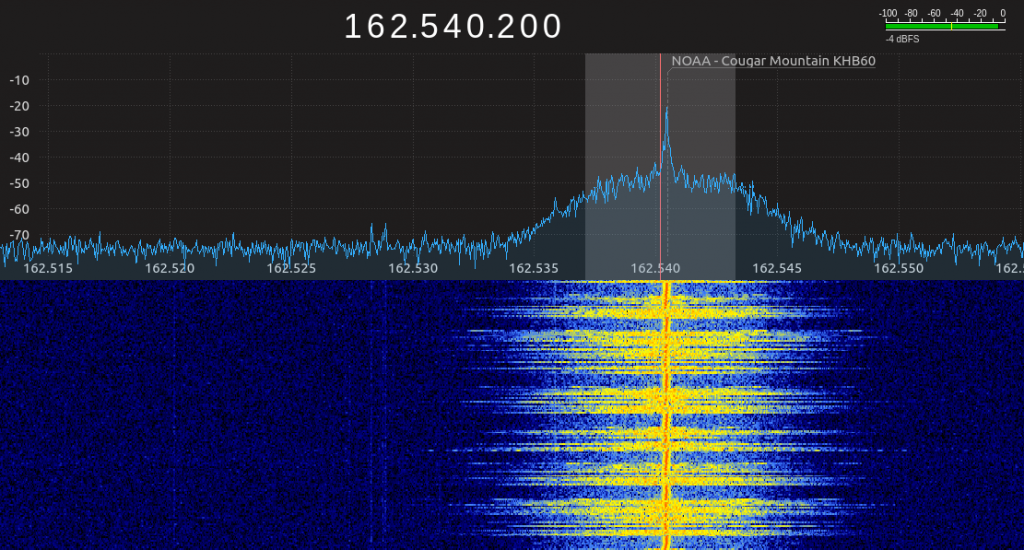SDR Antenna
The SDR hardware sold online usually includes an antenna. These antenna are not suitable to pickup radio transmissions that are low powered or distant. Here is an example of NOAA weather radio that is transmitted about 15 miles from my location.
This first image is with the standard antenna shipped with the SDR adapter.
The signal noise ratio is narrow, meaning the noise floor is high and the signal ceiling is low. The audio is noisy and hard to hear. This next image is with a handheld radio antenna. The noise is lower, but so is the signal. This is mainly because the antenna is attenuating the signal because it is designed for use with 433Mhz RF.
The third image is from an wide band high gain antenna that is mounted 20 feet above ground. The signal is much stronger, however there are shadows on each side of the carrier signal.
The shadow RF is because the antenna is directional and is currently pointing north, instead of 128 degrees to the South East. I used a map to to plot distance and bearing here, with 11.4 = adj, 8.9 = opp, on a right angle. See https://www.calculator.net/triangle-calculator.html?vc=&vx=8.9&vy=&va=90&vz=11.4&vb=&angleunits=d&x=74&y=27. The following image is after changing the direction of the antenna.
It’s easy to see that the RF reflection is gone, along with less noise between spoken words. This video covered the topic of antenna tuning with the use of test equipment.
As always, I hope you have enjoyed what you find here and look forward to seeing you back.
